Coach’s Top Team on Chemistry and Growth Opportunities
- Oops!Something went wrong.Please try again later.

There’s a recipe for the secret sauce at Coach: a blend of commercialism and creativity that has been successfully developed over the past eight decades.
The current duo entrusted with that recipe are chief executive officer Todd Kahn and creative director Stuart Vevers.
More from WWD
In their first joint interview since Kahn was elevated to the top post at the brand last April, the two talked about how they work together to create an environment where both business and fashion are respected and encouraged.
“When I reflect on Coach at its best, one of our major attributes is the balance, or the blending of magic and logic,” said Kahn. “And we really do that quite well together. My job as CEO is to create an environment for Stuart and the design and creative teams to really flourish. We know everything is not purely about commercialism, it’s about creativity, and we put two things front and center: our customer and our product, and I think understanding that and creating that right balance between us has really unlocked some wonderful things the last year and a half.”
Vevers agreed: “I think you’ve got to trust each other, and if Todd sees that I’m passionate about something, he knows that this is potentially going to be something great for Coach. And if he trusts me to go on that journey, to explore it, to experiment, then he knows that something good can happen.”
On paper, Kahn and Vevers could not be more different. A Chicago-born attorney who also worked for Accessory Network Group, Sean John and Salant Corp., Kahn joined Coach in 2006 as general counsel and has held a number of positions over the years, including chief administrative officer, before being named interim CEO and president in July 2020 and then permanent CEO in April.
Vevers, who was born in Yorkshire, England, has been with Coach for eight years. He was previously creative director of Loewe and has also worked at Calvin Klein, Bottega Veneta, Givenchy, Marc Jacobs and Mulberry over the course of his career.
But while the paths that led them to Coach are quite different, they both speak about their strong working relationship and mutual respect for the brand and its heritage.
“I first got to meet Stuart when we were trying to recruit him,” Kahn said. “I’ve had different jobs and functions at Coach and Tapestry, so when I became the interim CEO last summer, we had worked together for a long period of time, and we were able to kickstart things. It wasn’t a new relationship, there was already a lot of trust and understanding built in, and I think that’s why things are working so well: we’ve been in the trenches a long time.”
Vevers said that even though the two had a longstanding relationship, there were no guarantees that when Kahn took on the permanent CEO role it would continue to work. “We knew each other, and that gave us a really great head start, but when you really start working together as CEO and creative director, you never quite know how it’s going to be. But it clicked. Maybe it was helped by the fact that we’d built this relationship over time. I’m sure that helped, but also it just showed a great chemistry and a great new energy. When other people see that the CEO and creative director click, it’s very positive and empowering for the teams as well.”
It’s also been good for the bottom line.
In its fourth quarter and full-year results, reported in August, Coach parent Tapestry, Inc. said its largest brand posted a revenue gain of 117 percent in the quarter to $1.1 billion, outpacing pre-pandemic level sales by 2 percent. For the year, sales reached $4.2 billion and operating income increased 67 percent versus fiscal 2020 and 14 percent over fiscal 2019.
Joanne Crevoiserat, Tapestry’s CEO, said at the time that the company is anticipating further growth in the future. The goal is to increase market share in handbags and small leather goods, expand the men’s offering by presenting more of a lifestyle approach and increase the brand’s reach in Asia.
Kahn also said Coach managed to acquire 2.5 million new customers last year, half of whom were Gen Z and Millennials. These and other shoppers are also “repurchasing at a higher frequently” and buying higher-priced merchandise.
But like most brands, the past 18 months have been challenging to navigate because of the pandemic. For Vevers, it created what he called “an exploratory mindset. We’ve been in times that are so changed and so different, so we’ve encouraged each other to do things differently, and I think that’s been really liberating.”
It’s also led to some lasting changes at the brand. “I’ve been using the runway as a key moment to try new things, to push us to look forward, whether it’s challenging seasonality, experimenting with new materials — ideas that start out as a small experiment and become bigger opportunities,” the designer said. “We have learned how to explore this and more.”
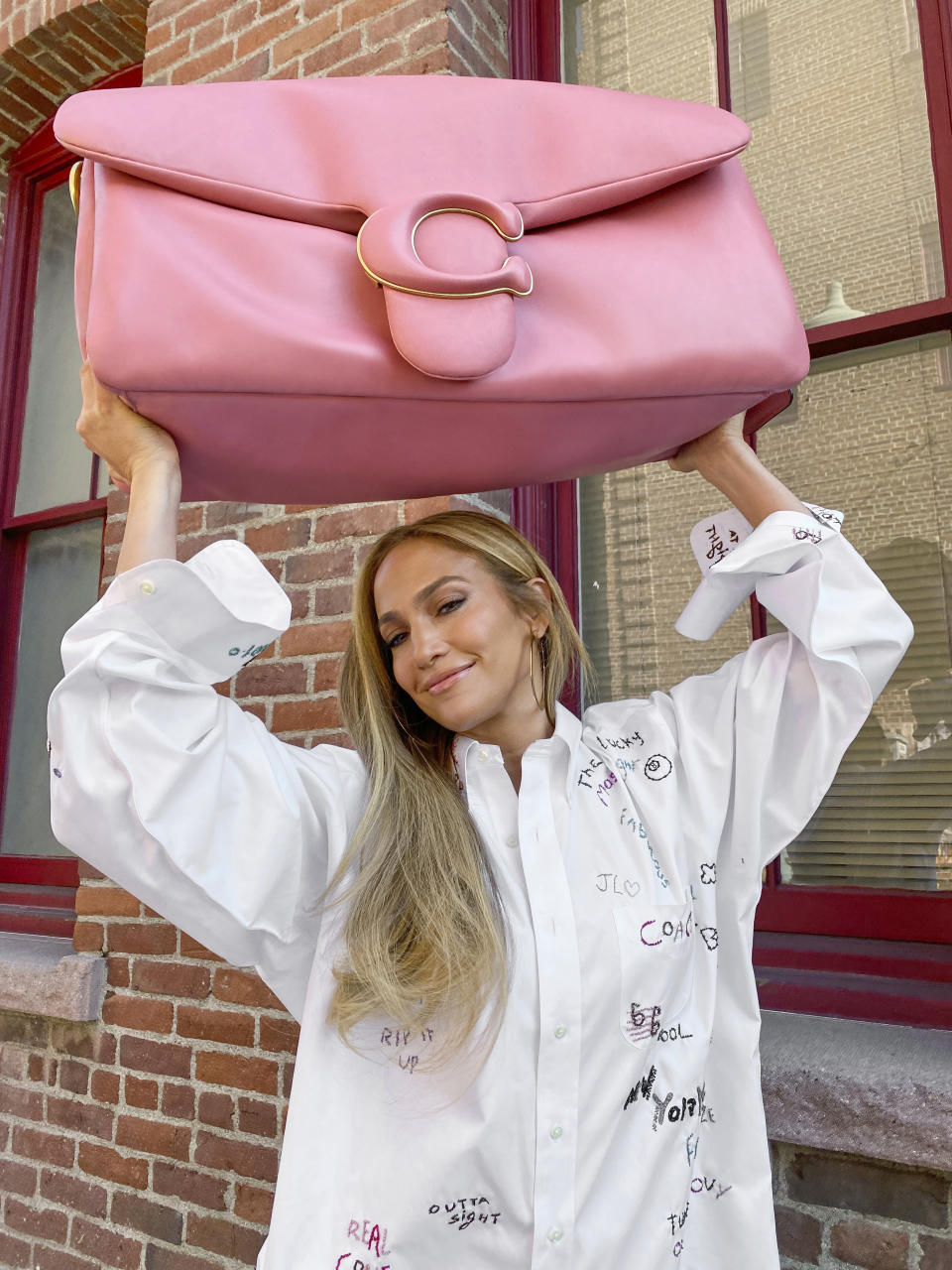
Case in point is the Pillow Tabby, a puffy women’s handbag based on an archival 1970s design that is now the brand’s best-selling bag.
“Of course, accessories is still what Coach is most known for and I think always will be: it’s our heritage,” Vevers said. “But we’ve seen breakthroughs with innovation and by being playful and having fun such as the Pillow Tabby, the squishy bag that was created in a moment where I thought people would want a sense of comfort. It was something that would make you feel good.”
Although Vevers has had his share of hits over the past eight years, including the Rogue and the entire Tabby Collection of bags, the Pillow Tabby became “a phenomena on social media,” he said, and reached a “whole different audience. I never experienced anything quite like it. We still struggle to keep it in stock in our stores today.”
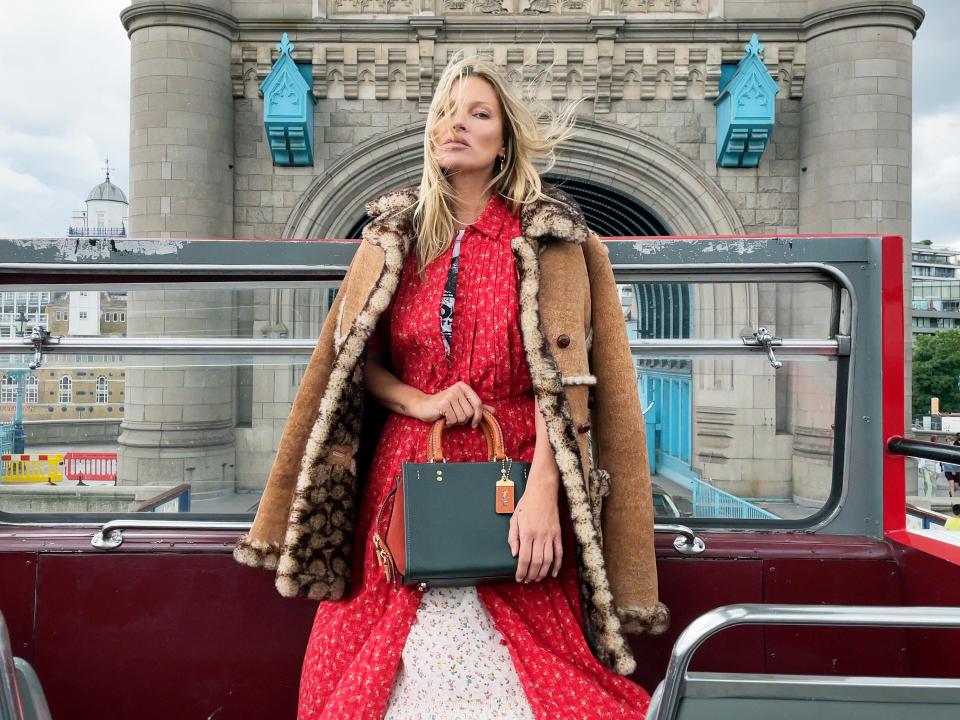
Kahn said this also illustrates the successful intersection of creativity and commercialism.
“We set out over a year ago to make our icons more important,” Kahn explained. “With the Pillow Tabby, typically, we would have been bored with it and moved it off of our full-price offering. But Stuart injected a sense of newness and longevity into the product, and not only did the Pillow Tabby become phenomenally successful, all of the Tabby bags became important again. That created an understanding that we can innovate and evolve our iconic styles and have them last for multiple seasons, which is a fabulous business outcome.”
Although apparel still represents a small portion of Coach’s overall sales — women’s handbags and accessories account for 72 percent of the volume — Vevers’ take on the category has definitely made its mark.
“I think what Stuart has done is compelling,” Kahn said. “Over his eight years at Coach, we have moved from purely a house of accessories, if you will, to a lifestyle brand — and that doesn’t happen overnight or with one collection. I remember his first year with Coach, he went back in and excavated the real historic codes of Coach, played with them and worked to expand them across, not just accessories, which is still our core product, but into a full lifestyle — and the customer is very engaged with us in the full lifestyle product.”
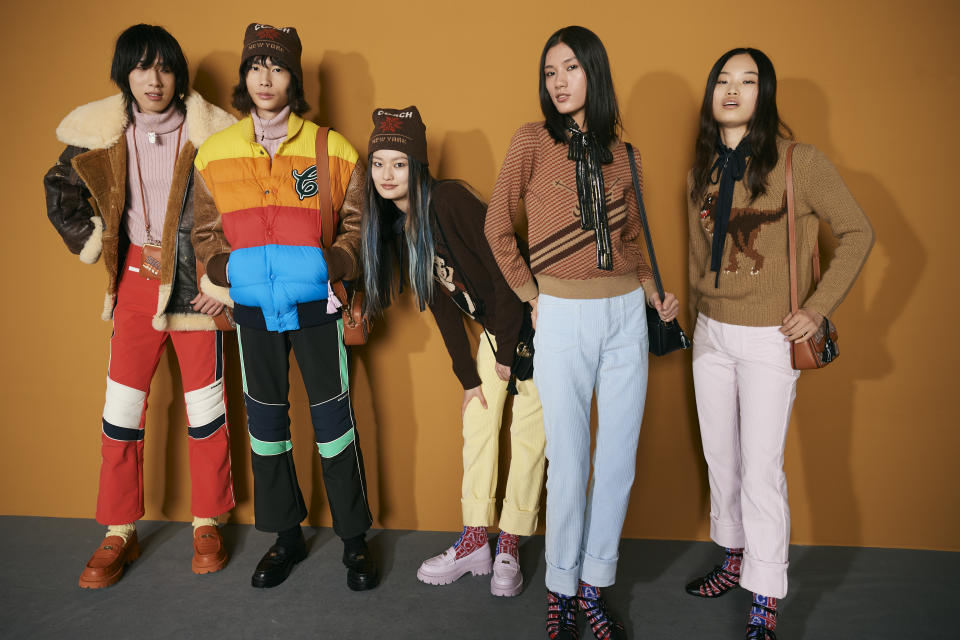
OU JIA CHENG
Vevers said it was a slow, deliberate process. “For a company of the scale of Coach, we were actually quite measured in our approach,” he said. “My first collection was a presentation — it was 19 looks. We wanted to understand what clothing could mean from Coach in a real way. I felt it was very important that this wasn’t just a marketing exercise — I wanted to see people wearing the Coach fashion collection. That was really important, so we took our time — our first runway show was actually my fourth season. We were very thoughtful about how we approached it and we didn’t try and do it overnight, and I think that was quite important.”
Since then the Coach runway shows have become major extravaganzas. Although the pandemic forced them to be paused for two seasons, Vevers returned during New York Fashion Week last month with a show that included elements first used at a live show in Shanghai in June. It included an intro centered around Coach TV, an online mock TV show featuring some of the brand’s buzzdsworthy ambassadors including Jennifer Lopez, Michael B. Jordan and others, as well as models on skateboards and a marching drum corp band.
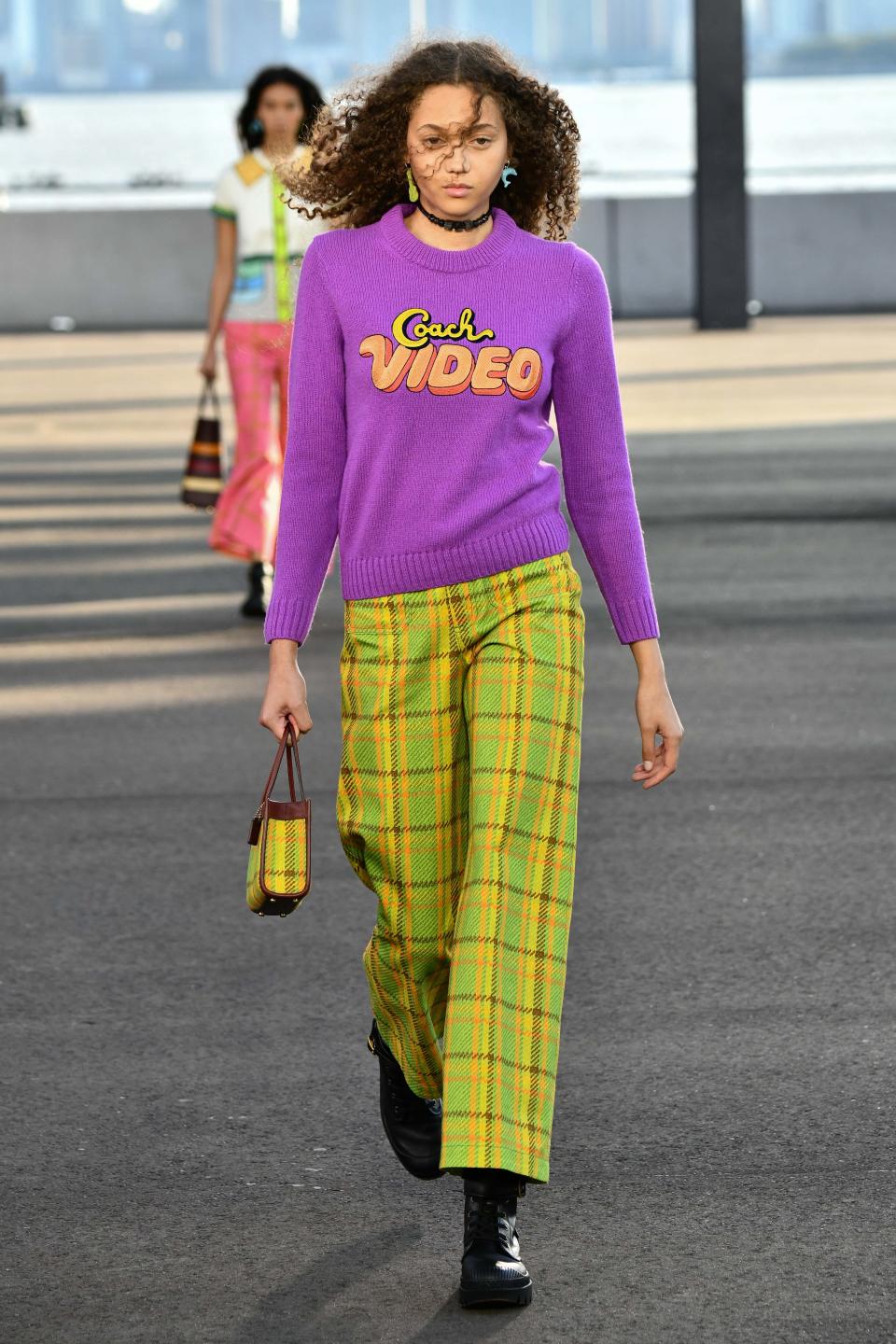
Rodin Banica/WWD
“The last year and a half has been about experimentation — we’ve tried new things that have really given me a new creative lease on life,” Vevers said. “Many of the constraints actually pushed me forward and some of the things that I was forced to do, I now do willingly because I’ve seen the effect.”
He continued: “I think we know who we are at Coach, we’ve carved out an area that feels right for us, that feels authentic, and it’s not about doing things how other people do them – it’s about doing things that feel right to us, like the way we approach our runway show where we embrace fashion and pop culture and entertainment and a sense of fun. It means that we’re doing something that feels unique to us. And as I look forward, I really want to stay true to ourselves and do things that just feel really cozy.”
Kahn is in complete support of this direction. “We had an amazing New York fashion show, but we had to make that decision six or seven months ago that we were going to buy into New York coming out [of the pandemic], set the stage and really make an impact.
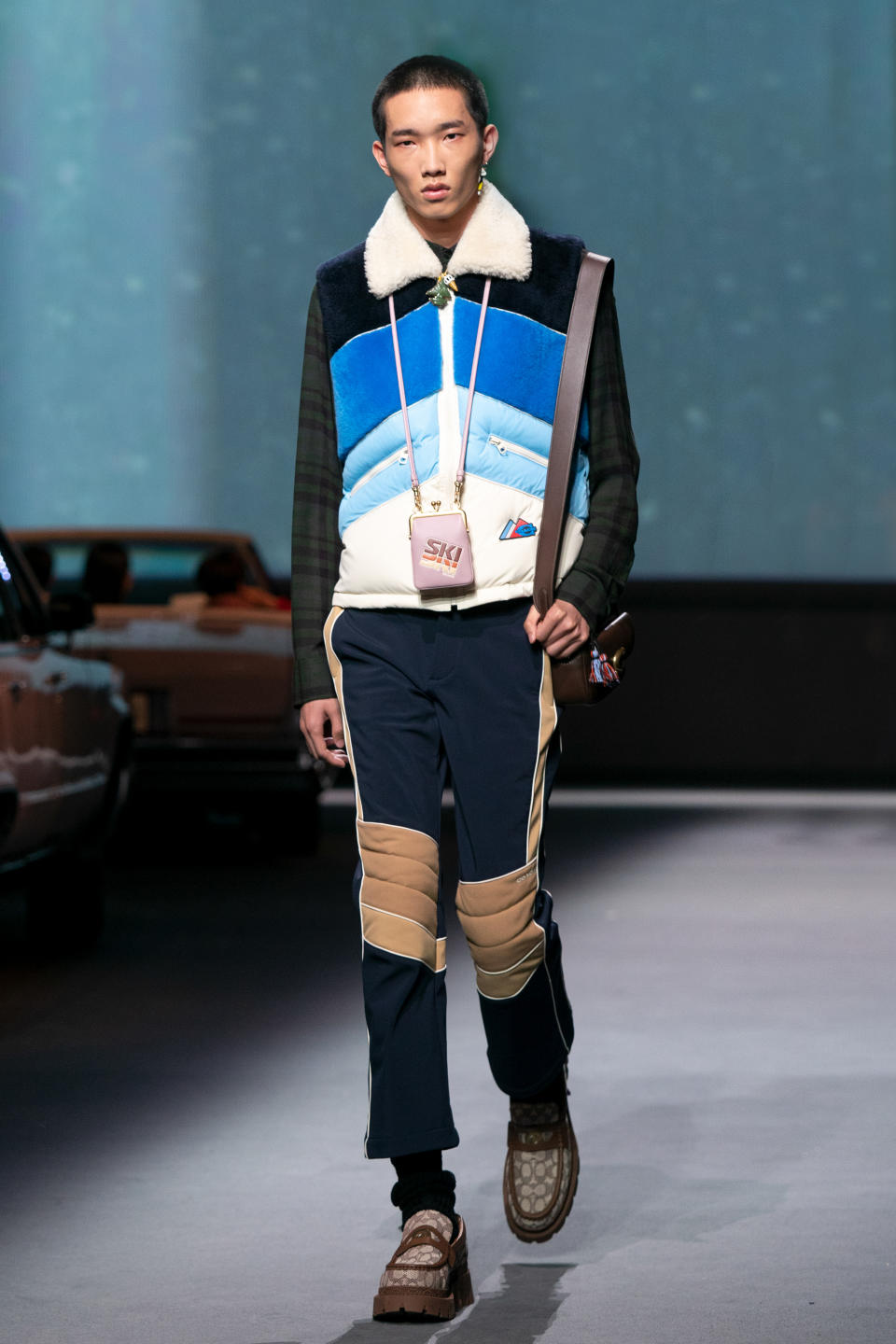
gu tao
“Similarly, we had an incredible show in Shanghai in June, but we also had to make the decision knowing that neither one of us was going to be able to go and we had to have the confidence that Stuart and his team could manage it from the U.S. We partnered up on that and said we were going to commit resources and capital because it really does help the brand. I’m certainly very commercial and Stuart is very creative and the fact that we can bring that together in this very synergistic way is joyful.”
Vevers said the plan is to hold a runway show in Shanghai every season in order to further solidify the Chinese business.
Whether in the U.S. or China, Coach’s message is clear. “What we’re messaging is authentic, original, genuine, and Stuart has really distilled this great American design aesthetic which has elements of fun and fashion and pop culture but is still grounded and rooted in a very long tradition,” Kahn said. We’re also an all-gender brand and a luxury inclusive brand — and that’s very different than traditional luxury. I think that is unique and we’re seeing a global consumer respond to it, because they do see the authenticity.”
Coach currently operates in 50 countries. China, with 22 percent of sales, is the second largest market behind North America, which represents 58 percent. “The growth in China is substantial because of the consumption of luxury goods in China,” said Kahn. “We’re very connected to China and the Chinese consumer, we’ve been in China for over 20 years, we have a vast fleet of retail stores that are very elevated and we’re going to continue to have events in China, like we did this year.”
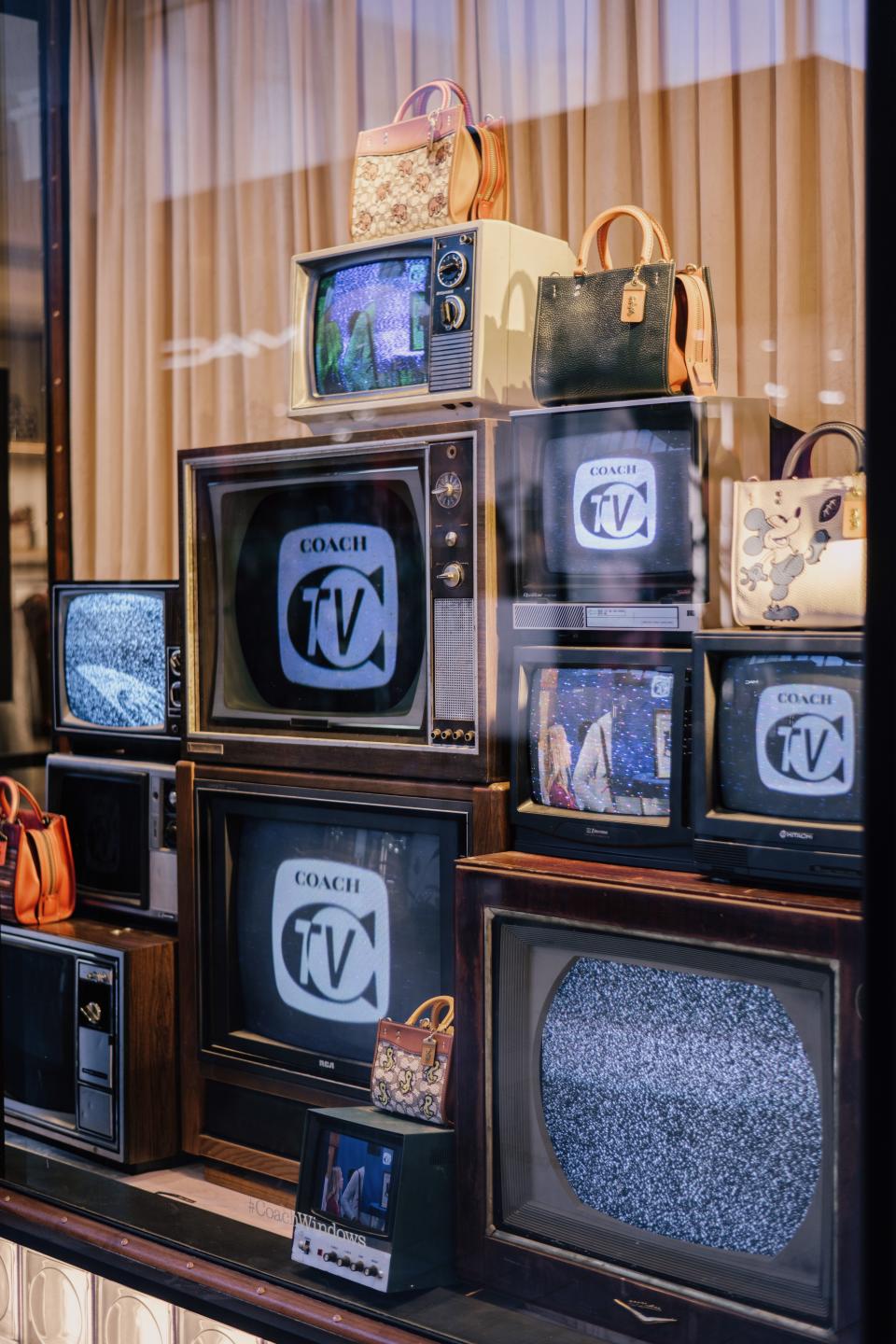
Other “big opportunities” for the brand include footwear, outerwear, cut-and-sew and traditional ready-to-wear, which Kahn said “can be very significant for our business overall” as the brand strives to reach a $5 billion benchmark in sales. Growing men’s wear to a $1 billion business, from its current $750 million in sales, is also viewed as an opportunity.
Direct-to-consumer, which accounts for a surprising 91 percent of Coach’s overall sales — it has 939 directly operated stores as well as a robust e-commerce site — is also seen as a growth vehicle. Kahn said Coach uses Tapestry’s rich data-gathering skills to “understand preferences and fill both our customers’ functional and emotional needs.”
But wholesale still plays a role. “I always want to win on wholesale because there’s nothing better than being in the center aisle of a great department store, whether it’s Nordstrom or Saks or Macy’s, I want to go head-to-head against the competition and win,” Kahn said. “We’re very competitive that way. I think our wholesale partners value what Coach brings to their doors and the cultural relevance that Coach has, for a very diverse and increasingly younger customer that we’re attracting.”
That customer is drawn to Vevers’ take on the brand, which effectively blends history with modernity. This from a man who was not born on American soil.
“I always say that only an Englishman can really define America well,” Kahn said with a laugh.
“Sometimes being an outsider [can help],” Vevers said. “I grew up in the north of England watching and being fascinated by American film and American TV and American music, so to be the creative director of a storied American house and to be able to explore American style from that authentic place was one of the things that really drew me to Coach. It’s about where heritage and pop culture unexpectedly and playfully meet and exploring the legacy of American style. There’s always been an ease to Coach that I’ve been drawn to and very much inspired by — that and the unapologetic, practical and authentic attitude of New York, which of course has been Coach’s home since 1941.”

DANIEL SALEMI
Another topic near and dear to both of their hearts is Coach’s strong commitment to sustainability.
As part of its corporate responsibility program, the corporation is working to achieve a 20 percent reduction in Scope 1 and Scope 2 CO2 emissions and a 20 percent reduction in absolute Scope 3 emissions from freight shipping over a 2017 baseline by 2025. It also hopes to reach 95 percent traceability and mapping of its raw materials, ensure that 90 percent of its leather is sourced from silver- and gold-rated tanneries, achieve 75 percent recycled content in packaging and a 25 percent reduction in North American corporate and distribution center waste, and cut water usage 10 percent across both the company and its supply chain.
It also introduced a new program, called (Re)Loved, which asks customers to trade in their bags to be recycled, repaired or reimagined, which Vevers said illustrates Coach’s ability “to create and craft things to last.”
Kahn made a point of singling out the contributions of Coach’s nearly 10,000 employees.
“We very much believe in our people, and it’s not the person with the biggest title in the room that should always have the biggest say,” he said. “We’re trying very hard to make that part of our culture. Our people are really being empowered. We live in a very competitive society and we want to make our company the employer of choice with a dynamic workforce that’s very engaged. I think Stuart does that with his creative teams and I try to do that with the business teams.”
He said employees are encouraged to “test and learn. We test, and if it sticks, OK, if it fails, we move on — not everything should be a directive from the top. We believe that’s powerful and will actually make us better.”
Sign up for WWD's Newsletter. For the latest news, follow us on Twitter, Facebook, and Instagram.

